Many people are wondering what is prostatitis. Under this term is understood the inflammatory damage to the prostate, which is often observed in men after 35 years.
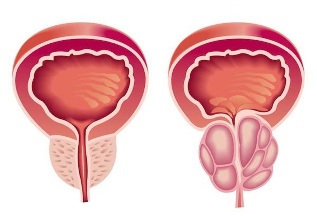
If not immediately start treatment of a pathology, there is a high probability that complications in sexual and reproductive matters.
The essence of the pathology
Under this term is understood inflammation of the prostate gland. It's a common urological violation. According to statistics, it occurs in 50 % of men after 50 years.
The prostate gland represents a glandular-muscular organ, which localized around the urinary tube. She is responsible for the synthesis of the selections that are associated with the seed liquid and they support the normal activity of sperm. It helps to protect them from the harmful effects of external factors.
Prostatitis is often acute and chronic. In the first case your body get harmful bacteria – xiii-xvi. century, intestinal sticks, Klebsiella and other micro-organisms. Infection occurs through the urethra, the flow of blood helena the serum.
Reasons
There are quite a lot of factors that provoke the emergence of inflammation. The main reasons of prostatitis include the following:
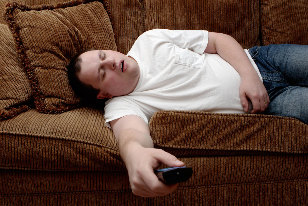
- Violation of blood circulation. This causes an increase in the size of the prostate. The cause of the problems is lack of exercise and overweight;
- Infectious diseases. Infection often occurs as a result of urethritis helena gonorrhea. In more rare cases, the provoking factors are flu, tonsillitis, tuberculosis;
- Bacterial inflammation. The cause of the problems is the penetration of infection in the prostate. This can happen through the bloodstream, with lymph helena during sexual intercourse. The cause of the problems can be bacteria that live on the surface of the human your body, helena into the abdominal cavity;
- Traumatic lesions of the pelvic organs. Also the reason why you often act the disruption of blood flow in this zone. This is the reason why prostatitis often develops in which a driver is exposed to vibration;
- Hypothermia and low physical activity. That causes the factor may cause chronic diseases of the genitourinary system, hormonal imbalance, lack of systematic sexual contact. The cause may be a delay of urination;
- The lack of movement. Insufficient level of physical activity negative effect on the endocrine function of the organs, the heart and blood vessels, nervous system. This process is accompanied by impaired blood circulation in the pelvic organs. In hypoxia the tissues of the gland are created conditions for active reproduction of pathogenic microorganisms. These factors provoke the development of prostatitis;
- Inflammatory defeat of direct intestinal helena urethra. This violation raises a secondary injection of the prostate. It can be rising helena declining;
- Chronic constipation. The constant violations of the chair include inflammatory changes in the body.
The key reason the disease belongs to the urological infections and a number of venereal diseases. To this category belongs urethritis, gonorrhea. Provoking factors may be even such a failure, such as chronic bronchitis, dental caries, tonsillitis.
Types of prostatitis
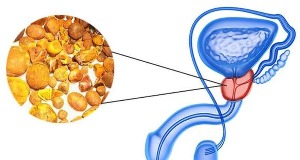
The symptoms of prostatitis depend directly on its biodiversity. Doctors there are a variety of varieties of diseases, for each of them are typical of certain characteristics.
Bacterial
This form of the disease is usually diagnosed in 21-43 year. In this case, are the main symptoms of prostate cancer include a substantial increase in temperature – it can soar up to 40 degrees. Also in humans occurs general weakness, chills, urination disorders.
Often patients suffer from erectile dysfunction, pain sensations in the groin, purulent and bloody dirt in the urine. The chronic form of the disease has more than a faint manifestations. However, in a relapse of the disease-the symptoms of prostatitis enlarged.
Calculous
The main manifestations of the disease include feelings of pain in the pelvic, sacral and perineal. Discomfort increases during physical activity your body. Also a disease that is characterized by a violation of urination, bloody impurities in the urine, increased by irritability, weakening of erection.
Stagnant
For this form of the disease is characterized by a chronic course. The disease develops at infringements blood flow in the pelvic organs. Also the reason may be the stagnation of secretions in the prostate. It is usually observed in the absence of sexual contacts.
For this form of disease are typical problems with urination. Also, a person experiencing discomfort in the testicles and the groin. It may increase the temperature, impaired erection, it develops depression.
A festering sore
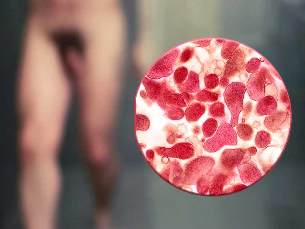
Under this term is understood one of the species of the acute bacterial form of the disease. For purulent prostatitis is characterized by a significant increase in thermal performance up to 40 degrees. Also in humans observed purulent debris in the urine, is disturbed urination, arise the expressed pain in the groin and inguinal area.
Symptoms
Symptoms of inflammation of the prostate depends on the stage of the disease:
- Catarrhal. In this case, the person develop symptoms of accelerated urination. Also arise pain when emptying bladder. The patient is experiencing discomfort in the groin and sacrum.
- The follicular. Painful gaining more marked character, sometimes the deals in the area of the anus and the veins in the bowel movements. This phase of the disease is accompanied by a violation of urination. In men urine flows in a thin stream. Sometimes, retention of urine, slightly increases the temperature.
- The parenchyma of the. For her are the typical symptoms of total intoxication, an increase in temperature to 38-40°, the condition of chills. In humans problems occur with urination, and observed a sharp pain in the groin. Often disturbed defecation.
If time does not cure the pathology, there is chronic prostatitis. For it is typical of the erased clinical picture. In rare cases, temperature indicators for grow into low-grade values.
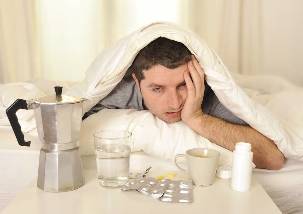
Quite often the pathology is a consequence of chronic inflammation, which is caused by contamination is a specific infection. It can be gonorrhea, Ureaplasma, Trichomonas. In this case, a person can be present a slight discharge from the urethra, unexpressed pain in the crotch area, increase the discomfort when urinating.
Also, the chronic form may be accompanied by a feeling of burning in the perineum and urethra. In humans observed excessive fatigue, sexual disorders, dysuria. If you have problems with potency man is struggling with mental anguish, increased anxiety, the irritability.
Painful
The prostate does not contain receptors. That causes the factor of discomfort is participation in the abnormal process of the nerve fibers. In people with chronic form of the disease arise from the pain of varying degrees of severity – from weak to very intense.
Painful changes its intensity during sexual abstinence, ejaculation helen increased sexual activity. The discomfort of giving in the sacral zone to the perineum and the scrotum. Sometimes it is felt even in the area of the lower part of the back.
Dysuric syndrome
Inflammation causes an increase in the size of the prostate, which sees the pressure to the ureter. His height becomes less. In humans is more frequent urination. Also experiencing a feeling of incomplete emptying of the organ.
Usually dysuric disorders manifest themselves in the early stages of the disease. After this there is compensatory hypertrophy of the muscles of the bladder and ureters. At this time signs of dysuria are falling. When decompensation referred mechanisms are the increase again.
Diagnosis

To reveal the inflammation of the prostate, it is necessary to turn to the urologist. According to the clinical picture of the disease it is possible to detect the disease, and even the stages of its development. Inflammation and an increase in the size of the prostate it is possible to visualize using ultrasound studies.
To key diagnostic procedures include the following:
- Palpation of the prostate – handling shall be done by a urologist;
- Various studies of urine – general, cytological, bacteriological;
- Microscopic examination of the seminal fluid;
- A swab from the urethra – analysis of the secretion is carried out for the assessment of the composition of the microflora;
- Analysis of the content of the PSA – in the course of handling assesses the specific protein of the prostate.
In most cases these manipulations is quite enough. With the availability of problems with the diagnostics performed urodynamic studies. For this man hospitalitynet.
In more rare cases is performed by Cytoscape. This procedure applies not only to diagnostic purposes. It can be and therapeutic. The manipulation provides an internal study of the urinary bladder and urethra. In the absence of damage there is no need to perform the procedure.

Treatment
Methods of treatment of prostatitis choose with regard to the shape and function of the course of the disease. Acute prostatitis is accompanied by severe intoxication, febrile illness, violation of well-being.
In this case, the patient requires immediate hospitalization. He is shown the introduction of antibacterial agents intravenously. In other forms of prostatitis need of such therapy is lacking.
Medical therapy
In the bacterial form of pathology recommended the use of antibacterial drugs. If the cause of the disease are bacteria, the use of such funds, does not give you the desired results.
Antibiotics used to treat almost all acute infections. Drugs in the acute form of the disease is chosen with regard to the data of the diagnostic studies. The doctor determines the specific type of micro-organism that caused the pathology, and the extent of its sensitivity to the drug.
To cope with the constant pain in the pelvic organs and the perineum, it is shown the use of muscle relaxants and alpha-blockers. Using antispasmodic remedies and alpha-blockers can relax the muscles of the affected organ and bladder. It facilitates the excretion of urine and to cope with the symptoms of the disease.
The removal of the protective tension of the muscle tissue, the removal of the tightness of the inflamed prostate and reduce the painful sensations the doctor may prescribe a muscle-relaxing products.
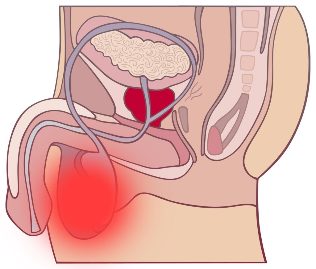
In challenging situations it is impossible to do without the introduction of fluids intravenously, and the use of natural medicines. Thanks to this therapy can stimulate the excretion of urine, which helps to avoid intoxication of the organism. This treatment prevents the occurrence of ascending infection in the urinary bladder.
For the removal of the symptoms of non-bacterial forms of the disease are discharged analgesic drugs, antipyretic drugs, anticholinergic agents. In chronic constipation it is necessary to use laxatives and softeners. An effective means is for industrial oils.
Even when removal of the main symptoms of acute bacterial pathology it is important to take a course of therapy is completely. If you stop treatment too soon, there is a high likelihood that a chronic process. Subsequently prescribe maintenance therapy.
In some cases, in the development of the pathology is the need to follow a special diet. It lies in the exclusion of acute and fatty foods. Also it is necessary to give up caffeine. Under the ban, are and acidic drinks.
On the condition of the men positively affects the systematic ejaculation. Provides drainage of the prostate secret. In acute violation of urination provides for a temporary suprapubic fistula. Can also regularly perform a catheterization.
Surgery
Surgery is recommended in the absence of effect from application of drugs. Also an indication for surgical treatment of prostatitis is blockage of the outflow of urine prostate. It is worth to take into account that young patients with this method is not prescribed, because it can be a cause of infertility.

There are several types of operative intervention:
- Transurethral resection of the body – this means the removal of all infected tissue;
- Prostatectomy – the procedure involves the removal of the prostate gland and adjacent tissues. In the course of handling will be reduced and seed bubbles. This is a relatively complex intervention, which often causes impotence and may become the cause of urinary incontinence.
The consequences
If time does not start therapy, the risk of hazardous effects to the health. First of all it is prostatitis is a dangerous development in an abcess. In the formation of purulent lesions of the prostate greatly increases the temperature. The heat gives way to symptoms of chills.
A sharp painful in the crotch he sees the violation of urination and bowel movements. Enlargement of the prostate edema with each other serious problems with urination.
In more rare cases, there is an independent autopsy an abscess, after which its contents gets into the intestine helena urethra.
The spread of infectious pathogens in chronic form of the disease causes the formation of cystitis and pyelonephritis. To the frequent consequences of the disease include inflammatory defeat of the testicles and their appendages. There is also the risk of vesiculitis, which represents the inflammation of the seminal vesicles. As a result of these processes often occurred to the disruption of reproductive function.

Prevention
To prevent the occurrence of inflammation of the helena relapse of chronic pathology, it is necessary to follow these instructions:
- Reduce the number of uses of alcohol;
- Systematically play sports;
- Avoid hypothermia;
- Give up smoking;
- Avoid stressful situations;
- Timely treat inflammation – in particular, this refers to genital infections;
- Take cold shower;
- Avoid lifting heavy objects;
- Use barrier methods of contraception;
- Systematically have sex;
- Take vitamin preparations;
- Engage enhance immunity;
- Twice a year to visit a urologist;
- Correctly and balanced eating.






























